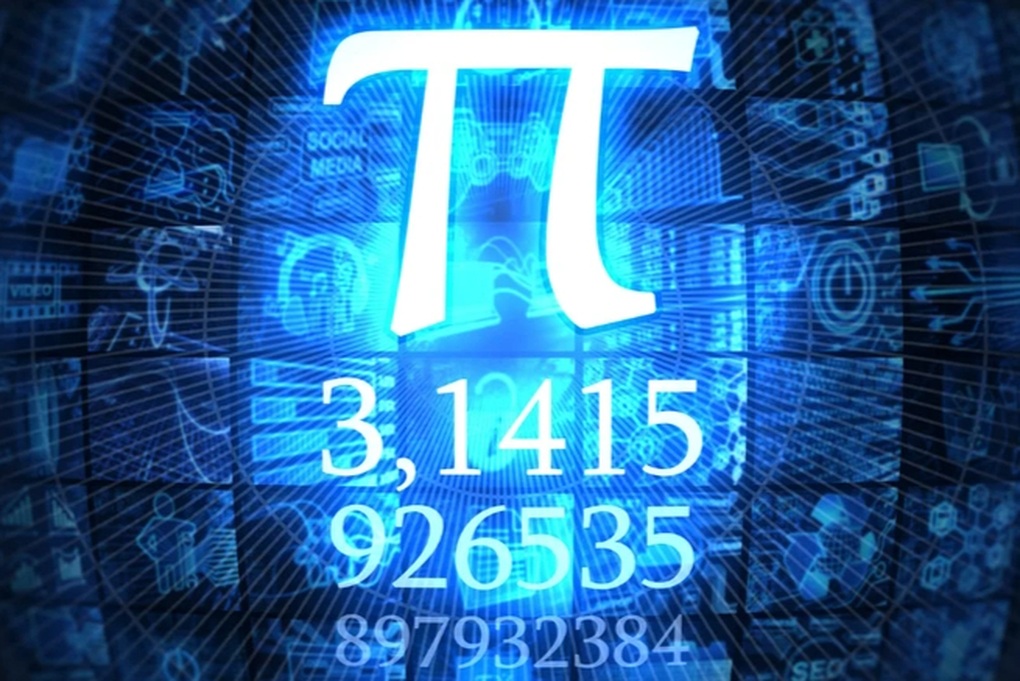Pi: From Ancient Number to Groundbreaking Quantum Formula
The number Pi, a familiar mathematical constant, has accompanied humanity for thousands of years, appearing in the primitive geometric calculations of ancient Babylonian and Greek civilizations.
Mathematicians such as Archimedes attempted to estimate Pi with high accuracy, laying the foundation for its indispensable role in modern mathematics, physics, and engineering.
However, Pi is an irrational number, with an infinite number of non-repeating decimal places, and cannot be represented as a neat fraction. Approximations such as 3.14159 or 22/7 are only relative, exposing limitations when faced with problems requiring absolute precision, especially in quantum mechanics or particle physics simulations.

The number Pi appeared in the first geometric calculations of ancient Babylonian and Greek civilizations (Photo: Getty).
For decades, scientists have been constantly trying to optimize the calculation of Pi, not only for its pure mathematical value but also to serve complex simulation models in modern research.
New Pi Formula: A Breakthrough from Quantum Modeling
According to Popular Mechanics , an unexpected breakthrough has just been announced by two physicists Arnab Priya Saha and Aninda Sinha from the Indian Institute of Science. In the process of building a quantum model simulating the interaction between elementary particles, the research team discovered a completely new formula for calculating Pi, published in the journal Physical Review Letters.
What makes this formula special is its ability to converge extremely quickly to the value of Pi. The team combined Feynman diagrams, which describe particle interactions in quantum physics, with Euler's beta function, a mathematical tool commonly used in string theory. This combination creates a computational sequence with a convergence rate that is superior to traditional formulas.
The new formula allows scientists to calculate Pi with very high precision without having to store millions of digits, significantly reducing the number of steps in complex physics problems. This is especially useful when using supercomputers to simulate particle interactions or the structure of matter at the quantum level.
Significance and prospects of application in future science
The new Pi formula is not only a mathematical achievement but also a computational tool with high applicability in many fields of modern science. Reducing the amount of data processing makes physical models run faster, more accurately and less expensive. This is an important step forward in particle physics, space simulation, new material development and the application of artificial intelligence in scientific research.
Dr. Aninda Sinha revealed that this research direction was proposed in the 1970s but was abandoned due to limitations in computing power. Now, thanks to modern technology, his team has proven that the new Pi formula is not only feasible but also surpasses initial expectations.
Although it has no direct application in everyday life, scientists consider this an important achievement in the field of basic science. It not only expands the understanding of Pi but also acts as a bridge between pure mathematics and practical problems in the microscopic world .
As Dr. Sinha shared, the greatest value of this discovery lies in opening new doors for future knowledge and scientific discovery .
Source: https://dantri.com.vn/khoa-hoc/dot-pha-tim-ra-cong-thuc-pi-hoan-toan-moi-sau-hang-nghin-nam-20250914212437798.htm




![[Photo] National conference to disseminate and implement 4 Resolutions of the Politburo](https://vphoto.vietnam.vn/thumb/1200x675/vietnam/resource/IMAGE/2025/9/16/5996b8d8466e41558c7abaa7a749f0e6)
![[Photo] General Secretary To Lam attends the National Conference to disseminate and implement 4 Resolutions of the Politburo](https://vphoto.vietnam.vn/thumb/1200x675/vietnam/resource/IMAGE/2025/9/16/70c6a8ceb60a4f72a0cacf436c1a6b54)
![[Photo] General Secretary To Lam chaired a working session with the Standing Committee of the Party Committee of the Ministry of Foreign Affairs](https://vphoto.vietnam.vn/thumb/1200x675/vietnam/resource/IMAGE/2025/9/15/f26e945b18984e8a99ef82e5ac7b5e7d)

![[Photo] Prime Minister Pham Minh Chinh attends the closing ceremony of the exhibition of national achievements "80 years of the journey of Independence - Freedom - Happiness"](https://vphoto.vietnam.vn/thumb/1200x675/vietnam/resource/IMAGE/2025/9/15/a1615e5ee94c49189837fdf1843cfd11)


![[INFOGRAPHIC] Redmi Desktop Speaker 2 Pro Cheap but good enough PC speaker](https://vphoto.vietnam.vn/thumb/402x226/vietnam/resource/IMAGE/2025/9/16/693f27e369064437a08f4a6c82efb18d)


















































































Comment (0)